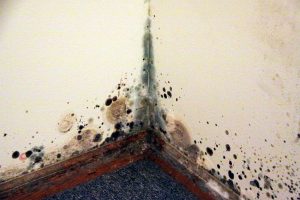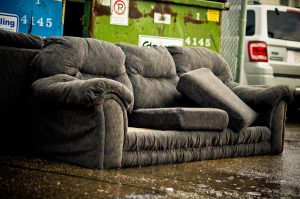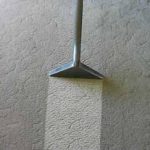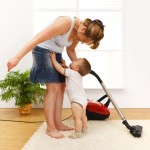There is nothing fun about having a wet carpet, especially when getting feet and socks wet when stepping in it. To make matters even worse, the combination of water, carpet fibers, padding, and baseboards provide the perfect environment for mold to develop. While you may not notice it at first, it can spread to cause significant damage that will be more expensive to fix without immediate treatment.
If the water has already caused destruction to your building materials, do not hesitate to contact a professional water damage restoration service. Otherwise, here are some tips on how to dry out wet carpet before it gets out of control.
Look Out for Mold
 As mentioned previously, mold is no friend to any property owner. This intruder can be caused by any case of untreated water damage, such as a leaking pipe, a faulty water-related appliance, leaking roof, or flooding. Once it has developed, it can cause severe destruction to your building materials and personal belongings.
As mentioned previously, mold is no friend to any property owner. This intruder can be caused by any case of untreated water damage, such as a leaking pipe, a faulty water-related appliance, leaking roof, or flooding. Once it has developed, it can cause severe destruction to your building materials and personal belongings.
But the biggest problem of mold growing in the carpet is that it is severely dangerous to everyone on the property. It is usually noticed if anyone experiences or notices any of the following:
- Strong, musty odor that continues to grow stronger everyday.
- Worsening allergies and/or asthma, such as itchy or watery eyes, sneezing, coughing, breathing problems, etc.
- Spots of black, green, or white discoloration in the carpet.
If you or anyone else on the property has noticed mold growing in the carpet, do not hesitate to call a mold removal specialist to have it removed before taking steps to dry out the affected areas. Keep in mind that you may have to replace the carpet or hire a carpet cleaning service to ensure that it doesn’t return in the future.
Steps to Take When Drying Wet Carpet
1. Identify and Remove the Source of the Damage
The first step in restoring any type of water damage is to find and remove the source. Fixing a broken pipe or replacing rotting shingles will effectively secure the area and prevent it from returning.
2. Extract As Much of the Water As Possible
Once you have removed the source of the water, the best way to extract it is to rent a wet vacuum from a fire and water damage restoration company. You can also hire the service to do it for you.
Don’t become deterred if the area doesn’t dry out right away. It can take a few days – depending on the thickness of the carpet and extent of the damage – to dry out completely. In the meantime, you can set up fans and dehumidifiers to accelerate the drying process. This will also lower the risk of any mold growth in the future.
 3. Inspect the Furniture
3. Inspect the Furniture
Especially with heavy furniture, water can travel up wooden legs and cause severe damage. If the carpet is still damp, place a piece of foil between the legs and carpet to prevent the wood from absorbing the moisture. You can also prop up furniture skirts and curtains to prevent them from becoming wet.
You can also take these water damage prevention tips to prevent water from damaging other building materials and belongings.
If your furniture has already been damaged, you can have it effectively cleaned and restored with upholstery cleaning services.
4. Think About Replacing the Carpet Padding
Depending on the type of carpeting and how deep the water has penetrated, you may need to replace your carpet padding. On the other hand, replacing this material will certainly be more cost-effective than replacing the entire furnishing. You will also be protecting your and your family or staff from the threat of mold growth.
5. Clean the Carpets
Even if you don’t see it, there can still be bacteria and mold spores growing within the carpet after it has been dried out. To ensure it is not developing, have the carpet professionally cleaned, and all of the embedded dirt and debris will also be completely extracted from the fibers.
6. Apply a Layer of Baking Soda
Although it can be messy, baking soda can work a lot of magic around the house. Sprinkling a good amount over the drying area will speed up the process, absorbing any remaining moisture. Let it sit for at least 30 minutes and vacuum the area afterwards.
 7. Cleaning Baseboards and Walls
7. Cleaning Baseboards and Walls
While your carpet may now be clean, the walls and baseboards may still have growing bacteria that can develop into mold within a short amount of time.
Thankfully, it can be easily avoided by putting on a pair of rubber gloves and washing them down with soap and water. To completely sanitize them, you can apply a mixture of 1.5 cups of bleach and a gallon of water.
Contacting the Professionals
While wet carpet restoration can be performed using home remedies, it can be a hassle to do yourself. Many property owners are simply too busy to do it themselves or just want to avoid the stress altogether.
To have the area treated professionally, you can call ServiceMaster, a trusted disaster restoration and cleaning service to do it for you. Our water damage cleanup services consist of using advanced equipment and products to have the area effectively and efficiently dried and restored to its original condition. Finally, you can focus on other daily activities without worrying about the dangers and destruction of water and mold!
 3. Inspect the Furniture
3. Inspect the Furniture 7. Cleaning Baseboards and Walls
7. Cleaning Baseboards and Walls



